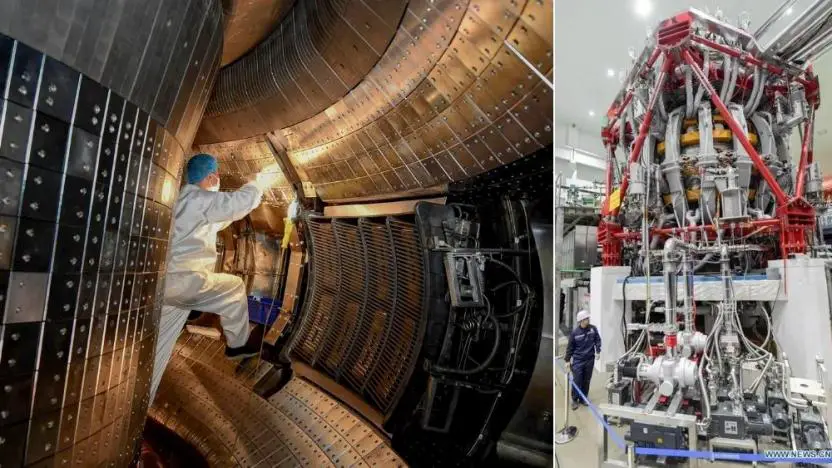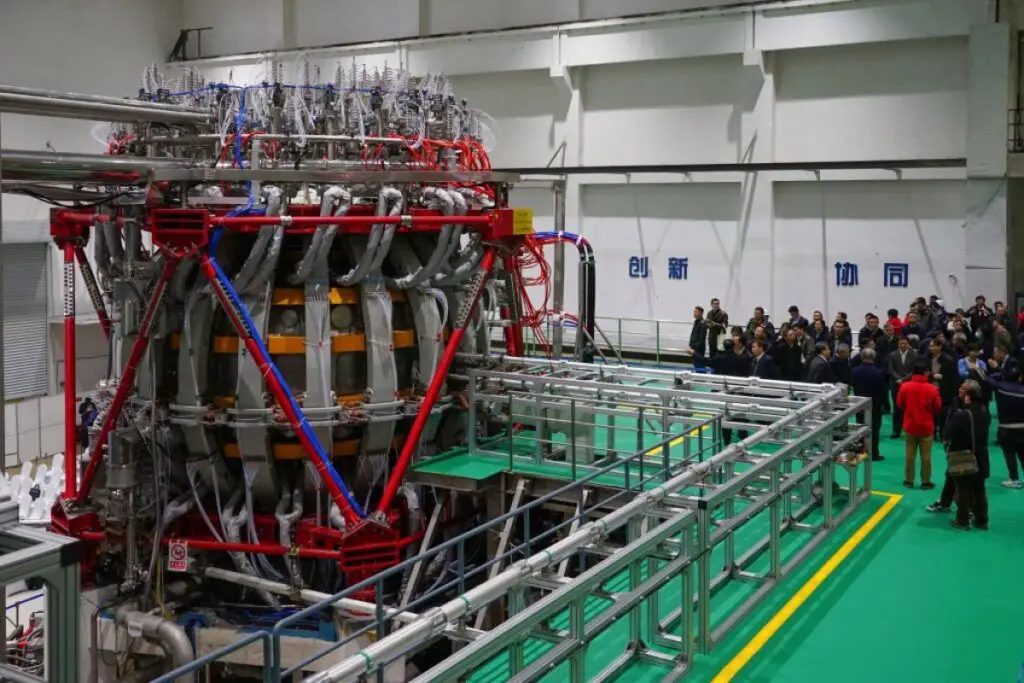The nuclear fusion reactor developed by China and named ‘artificial sun’ remained at 70 million degrees for 17 minutes.

The nuclear fusion reactor developed by China and named ‘artificial sun’ remained at 70 million degrees for 17 minutes. And this means 5 times warmer than the Sun.
Fusion called ‘artificial sun’ as part of its clean energy project set a new record.
Nuclear fusion reactor research facility Experimental Advanced Supercounducting Tokamak (EAST) announced that it operates for 17 minutes at 70 million degrees Celsius.

70 million Degrees Celsius Temperature Reached
The EAST (Experimental Advanced Superconducting Tokamak) nuclear fusion reactor maintained a temperature of 158 million degrees Fahrenheit (70 million degrees Celsius) for 1,056 seconds, according to the Xinhua News Agency. The achievement brings scientists a small yet significant step closer to the creation of a source of near-unlimited clean energy.
The Chinese experimental nuclear fusion reactor smashed the previous record, set by France’s Tore Supra tokamak in 2003, where plasma in a coiling loop remained at similar temperatures for 390 seconds. EAST had previously set another record in May 2021 by running for 101 seconds at an unprecedented 216 million F (120 million C). The core of the actual sun, by contrast, reaches temperatures of around 27 million F (15 million C).
What is the Purpose of the project?
Fusion is a very expensive process, but China’s tests could help researchers in their search for ways to reduce costs
A Matter of Scale
Most experts are confident the idea will work, but many believe that it is a matter of scale. To make it work, you have to go large, the BBC reported.
“I think fusion needs resources to really make it work,” said Prof. Ian Chapman from the United Kingdom Atomic Energy Authority (UKAEA). “You could do that within a company or a country but you really need to have the requisite scale and resources.
“When ITER works, and I say when, not if, it will be a step change for fusion and you will see massive investment come into the field.”
Meanwhile, scientists at the US Department of Energy’s flagship laser facility shattered their own record by generating more than 10 quadrillion watts of fusion power for a fraction of a second — roughly 700 times the generating capacity of the entire US electrical grid, Nature.com reported.
Housed at Lawrence Livermore National Laboratory in California, the US$3.5-billion facility wasn’t designed to serve as a power-plant prototype, however, but rather to probe fusion reactions at the heart of thermonuclear weapons.
Researchers at the PPPL also recently announced they have developed an effective computational method to simulate the crazy-quilt movement of free electrons during experimental efforts to harness fusion power.
The method cracks a complex equation that can enable improved control of the random and fast-moving moving electrons in the fuel for fusion energy.
The European Investment Bank is also pumping hundreds of millions of euros into the Divertor Tokamak Test facility (DTT), an Italian program to produce fusion energy by 2050.
Meanwhile, only time will tell by when all these efforts and investments will start delivering results on Earth.





